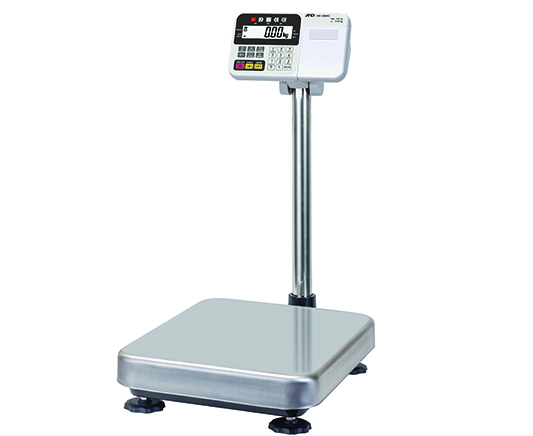In the world of wireless communication, 5G technology promises a revolutionary leap forward. At the heart of this game-changing tech are 5G antennas, the unsung heroes enabling unprecedented speed and connectivity. This guide explores the vital role of 5G antennas and how they intersect with the world of commercial digital signage displays.
The Power of 5G
5G technology is a vast improvement over its predecessor, 4G. With faster data speeds, reduced latency, and increased capacity, it facilitates more devices connecting concurrently without compromising performance.
Role of 5G Antennas
5G antennas play an instrumental role in achieving these heightened capabilities. Unlike the antennas used in previous cellular generations, 5G antennas employ a technology called beam forming. Rather than broadcasting signals broadly, these antennas focus the wireless signal, directing it precisely to where it’s needed. This technique ensures optimized use of limited spectrum resources and improves coverage, capacity, and the overall user experience.
Types of 5G Antennas
There are two primary types of 5G antennas: the Massive MIMO (Multiple Input Multiple Output) and the Small Cells.
Different Types of 5G Antennas
- Massive MIMO Antennas: These antennas are larger and more powerful, enabling a significant increase in capacity. They utilize multiple transmitters and receivers to send and receive more data simultaneously, making them ideal for urban and congested areas where the demand for data is high. Massive MIMO antennas are larger and more powerful, enabling a significant increase in capacity by using multiple transmitters and receivers to send and receive more data simultaneously. They are particularly beneficial in urban and congested areas where the demand for data is high.
- Small Cells: These are miniature antennas used to supplement coverage in areas where the main network struggles to reach. They are typically used in rural areas or regions with difficult terrain. Apart from this, they are also perfect for indoor coverage like shopping malls or large office buildings where traditional cell towers might struggle to penetrate. Small Cells are miniature antennas used to supplement coverage in areas where the main network struggles to reach. They are typically used in rural areas or regions with difficult terrain, helping to boost capacity and coverage. Small Cells are also ideal for indoor coverage, such as shopping malls or large office buildings, where traditional cell towers might struggle to penetrate.
- Beamforming Antennas: These antennas use a technique to direct the wireless signal precisely where it’s needed, optimizing the use of limited spectrum resources and improving coverage, capacity, and user experience.
- Phased Array Antennas: These are a type of directive antennas which use the principle of phase array to create a directional beam of radiation. They are designed to transmit and receive 5G waves and provide efficient spectrum usage.
- Metamaterial Antennas: These are a new class of antennas which use metamaterials to increase performance of the antenna significantly. They provide a highly efficient, compact and robust platform for future 5G networks.
5G Antennas and Applications

5G antennas are a vital part of various applications across multiple sectors. In the healthcare industry, for instance, 5G can enable real-time remote patient monitoring, telemedicine, and robot-assisted surgeries. For these applications to function effectively, 5G antennas play a critical role in maintaining a stable and high-speed connection.
In the automotive industry, 5G antennas are paving the way for autonomous vehicles. The low-latency and high-speed connectivity provided by these antennas allow for real-time data transmission, which is crucial for the safe operation of autonomous vehicles. They allow the quick relay of information between vehicles and infrastructure, ensuring smooth traffic flow and preventing accidents.
Similarly, in the manufacturing sector, 5G antennas are empowering the fourth industrial revolution or Industry 4.0. They provide the necessary connectivity for the Internet of Things (IoT) devices, facilitating real-time monitoring, automation, and data analysis.
Furthermore, 5G antennas are also transforming the entertainment industry, making possible new experiences like virtual reality (VR) and augmented reality (AR). These technologies require high-speed data transmission and low latency, which are characteristics of 5G, facilitated by these advanced antennas.
5G Antennas and Commercial Digital Signage Displays
The benefits of 5G go beyond personal devices. One emerging application area is commercial digital signage displays. These displays have become increasingly prevalent in public spaces, offering dynamic, interactive content that outshines traditional signage.
Commercial digital signage displays thrive on high-speed, reliable connectivity. They need to update content regularly, often in real-time, from various sources. This is where 5G antennas come into the picture. With their high-speed data transfer capabilities, they ensure that digital signage displays never suffer from lag or buffering, providing a seamless viewing experience.
Impact on Digital Signage Displays
5G antennas can revolutionize the way we use digital signage displays or android media player. With the download and upload speeds offered by 5G, digital signage displays will be able to stream high-definition video content without any delay. Moreover, the increased connectivity facilitates more interactive features, such as touch screens and augmented reality, enhancing the overall user experience and engagement.
In Retail:
5G antennas enable high-speed, real-time connectivity in retail stores, paving the way for smart shopping experiences. From virtual fitting rooms to real-time inventory tracking, these antennas play a crucial role in retail transformation.
In Education:
The implementation of 5G antennas in educational institutions can facilitate seamless online learning and virtual classrooms, bridging the gap between teachers and students irrespective of their geographical location.
In Public Safety:
5G antennas can provide robust, reliable communication channels for emergency services, significantly improving response times and coordination during crisis situations.
In Smart Cities:
5G antennas are at the heart of the Smart City concept, providing high-speed connectivity for various applications such as traffic management, waste management, and energy conservation.
In Agriculture:
The deployment of 5G antennas in the agricultural sector can lead to precision farming, enabling farmers to monitor crops and livestock in real time, and make data-driven decisions.
In Logistics and Supply Chain:
5G antennas facilitate real-time tracking and monitoring in the logistics and supply chain industry, improving efficiency and reducing costs.
In the Energy Sector:
In the energy sector, 5G antennas can be used for real-time monitoring and control of energy generation and distribution systems, improving efficiency and reliability.
Conclusion
In conclusion, as 5G technology continues to evolve, so too will the potential uses for commercial digital signage displays. 5G antennas, with their enhanced capabilities, will undoubtedly play a significant role in this evolution. As businesses and cities continue to adopt digital signage, 5G antennas will be instrumental in fully realizing the benefits of this technology. 5G antennas, whether Massive MIMO or Small Cells, are the backbone of the 5G revolution. Their role extends beyond just enabling faster speeds and lower latency. They are fundamental to the transformation of various industries, from healthcare to manufacturing, and the push towards a more connected future.
Tekdis UK is a global technology provider specialising in display, embedded computers and RF hardware for industrial markets. We offer comprehensive solutions to OEM manufacturers, ISV’s, solution providers and system integrators around the world with regional logistics hubs in the UK. Our mission is to understand customer applications requirements while delivering cost-optimized solutions that meet their needs from pre-sales through post-sales support. With an eye on market trends and latest technologies we are constantly innovating our products – allowing us to provide unique value propositions that give customers the best possible results. Our vision is to be at the forefront of technological development by offering customised industry hardware that surpasses competitive standards.










